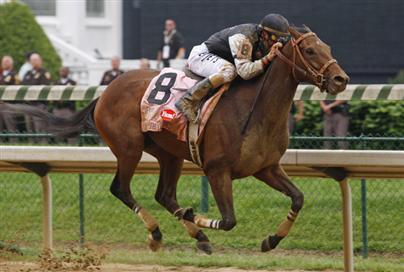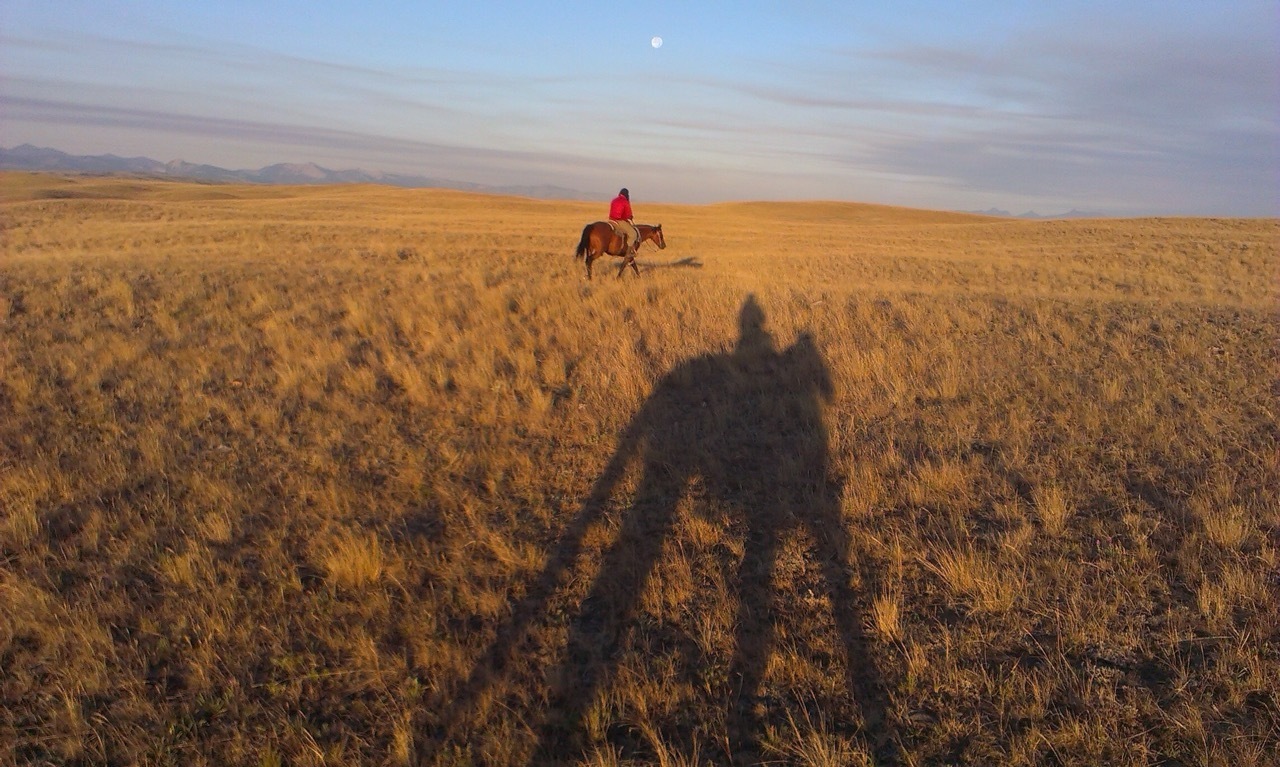The Trouble with Lasix
Testimony before the Kentucky Horse Racing Commission hearing on raceday medication. November 14, 2011, Frankfort, KY, on behalf of the Humane Society Veterinary Medical Association and the Humane Society of the United States.
Sid Gustafson DVM
Equine veterinary behaviorist representing the health and welfare of horses
11-11-11
To appreciate the nature of the thoroughbred, I would like to briefly review the evolution of the horse and the domestication process. Of all human/equine pursuits, horse racing is perhaps the most natural equine pursuit of all, more natural than polo or stadium jumping or cutting, for example. Horses have evolved for 60 million years to run at speed in close company. Running at speed is the horse’s long-evolved group survival mechanism. This is the nature which is nurtured in thoroughbred lines and thoroughbred development and training. Racing comes natural to a horse.
To appreciate how horses develop the athletic endurance to run at speed together in connected and close company, veterinary behaviorists observe horses in natural settings to assess how horses naturally prepare themselves to race. They study how horses prepare younger horses to develop strong limbs and lungs and musculoskeletal systems to achieve success in evading prey. Knowledge of the horse’s nature is abundantly applied here in Kentucky. Farm after farm has large pastures where bands of mares and foals, and later bands of cohorts, run and play and learn to travel closely together at running at speed. They learn to communicate together, to change leads together, to move in a safe and synchronous organized fashion while running in large circles. It is this essential experience with other horses in a herd that a growing thoroughbred gains the confidence to run by and through horses later in life in a race.
The goal of a harem is to teach the foal to run with the herd. The mare and band are the long-evolved teachers of this process. The herd conditions growing horses. Running with the herd facilitates the physical development of the lungs and musculoskeltal system. The reproduction and re-creation of these natural behaviors are essential for the healthy mental and physical development of the thoroughbred, as is evident everywhere in the Bluegrass. In order to later prevail in a horserace, growing thoroughbreds need to be conditioned by the herd to develop the ability, coordination, stamina, pulmonary capacity and strength, confidence, and experience needed to endure training and racing.
It is this knowledge that elucidates how raceday medication impoverishes the welfare of racehorses. To appreciate the principles of equine behavior is to understand what is required to maintain pulmonary health in horses confined to stalls being conditioned to race. The solution to managing Exercise-Induced-Pulmonary-Hemorrhage is appropriate breeding, development, horsemanship, training, and husbandry. The care that establishes and enhances pulmonary health and endurance in horses is the same care that enriches stabled horses’ lives. It is the same care that keeps racehorses’ musculoskeletal systems sound. It is the care that keeps horses on their feet during races.
One point is clear; the data from non-Lasix, non-raceday medication jurisdictions indicates clean-running horses suffer significantly fewer breakdowns than horses running on Lasix in America. Over the last two years, we watched two horses break down for every 1000 starts. Meanwhile, the clean running Hong Kong Jockey Club has less than one breakdown for every 2000 starts. They have no apparent or significant problems with bleeding. They have clearly demonstrated that clean racing is four times safer than medicated racing.
Horses with healthy lungs are content and fulfilled horses whose lives their caretakers adequately if not extensively enrich. Lung health is supported by limb health. Appropriate husbandry and training maintains and establishes soundness of both wind and limb. Breathing and running are biologically intertwined on the track, a breath per stride. To stride correctly is to breathe correctly. To breathe correctly is to breathe soundly, and race sound.
Horses who are bred, socialized, and developed properly from birth, and who train while living enriched stable lives are seldom likely to experience performance-impairing EIPH while racing. They are more apt to stay sound. Humane care of the horse prevents bleeding, my friends. Pulmonary health is reflective of appropriate husbandry, breeding, training, nutrition, and the abundant provisions of forage, friends, and perhaps most importantly, locomotion. Bleeding in a race is reflective of inadequate care and preparation, of miscalculations and untoward medication practices. Lasix perpetuates substandard horsemanship, artificially suppressing the untoward result (bleeding) of inadequate preparation of the thoroughbred. Peformance medication leads to fragility. Rather than alleviate medical conditions, this data indicates racing medications exceed racehorse adaptability and perpetuate fragility in racehorses. Fragility is dangerous for both horses and riders. To grasp how Lasix impoverishes the welfare of the racehorse, one needs to understand the long-evolved nature and behavior of the racehorse.
Genetics play a role in pulmonary health and physical durability. Lasix perpetuates genetic weakness by allowing ailing horses to prevail and sow their seeds of pharmaceutical dependence. Lasix manages a wide variety of unsoundness’s, as do the cortisones and NSAIDs. Running sore causes lungs to bleed. Anti-inflammatory drugs aggravate coagulation processes. Please appreciate that horses running on pharmaceutical scrims are 4X more likely to break down. Pulmonary health is dependent on appropriate breeding and proper development for the vigor, durability, and endurance thoroughbred racing demands. Drugs are not the solution. Competent horsemanship is the solution. Genetic dosage, behavioral and physical development, socialization, training, and husbandry are the keys to racehorse soundness, stamina, and durability.
The causes of EIPH are clear. Horses prone to bleed are those horses that are mistakenly bred, inadequately developed, and inappropriately stabled and trained. To allow drugs to cover conditions reflective of horsemen failing to attend to the basic needs of the horse in training impoverishes thoroughbred and standardbred welfare. To administer Lasix, the adjunct drugs, and phenylbutazone to virtually every horse before he or she races is an inappropriate application of veterinary medicine. The en masse drugging of racehorses has been demonstrated to be unethical, unnecessary, and untoward. In the case of contemporary American racing, Lasix is the drug that allows horsemen to abuse horses, to use a plethora of performance enhancing drugs, to cut corners on the proper care, conditioning, development, and husbandry of their racehorses, to develop an ideology that relies on drugs rather than talent. Drugs should not be allowed to alleviate conditions reflective of improper care. The first rule of veterinary medicine is; First, Do No Harm.
Horses evolved as social grazers of the plains, group survivalists moving and grazing together much of the time. Horses require near-constant forage, friends, and locomotion to maintain health of wind and limb. Racehorses are no exception. The last place a horse evolved to live is in a stall, alone. The solution to manage bleeding in racehorses is to develop, teach, train, and care for horses in a horse-sensitive fashion. Training and husbandry need to be a good deal for horses in order for horses to maintain healthy partnerships with people. Pulmonary health is reflective of overall health and soundness in horses.
In order to maintain pulmonary health, natural conditions need to be recreated in the stable. Horses prefer to graze together and move nearly constantly. This constant grazing and moving are essential for joint and bone health, hoof health, metabolic health, and pulmonary health. In order for lungs to stay healthy, horses need movement, often more movement than trainers provide. Walking enhances and maintains horse health. Stabled horses need a lot more walking than most are currently afforded. Abundant on track and off-track locomotion is necessary to condition a horse’s lungs. Lungs deteriorate when movement is restricted. Horses breath all day long, and movement is required much of the day to maintain pulmonary strength and health. Walking and movement enhance breathing and lung health. Drugs are not the answer.
Development and conditioning of pulmonary health throughout growth and while training are the answers to preventing bleeding, as they have always been. To enhance pulmonary health is to enhance the horse’s entire life and outlook. Not only do properly stabled and trained horses’ lungs hold bleeding in abeyance, they hold sway and win. Pulmonary health and bleeding prevention are dependent on smooth running and biomechanically sound locomotion.
Horses evolved in the open spaces of the northern hemisphere and require the cleanest, purest air to thrive and develop healthy lungs and hearts. Stable air needs to be constantly refreshed to maintain pulmonary health. Ventilation is essential, and enclosed structures are often inappropriate. Barn design needs addressed to maintain pulmonary health. Bedding is critical. Clean straw provides the most movement by simulating grazing. Horses stalled on straw are noted to move about with their heads down nibbling and exploring for hours, recreating natural to some degree, keeping their lungs healthy with movement, their respiratory tracts drained by all the head-down nibbling and grazing. Horses need near-constant movement to maintain optimum lung health. Long-standing horses’ lungs deteriorate quickly. Not only does near-constant movement maintain and enhance pulmonary health, abundant locomotion maintains metabolic health, joint and bone health, hoof health, and digestive health. To enhance lung health is to enhance the overall health and soundness of the horse. Racing is safer in Lasix-free jurisdictions where the drug crutch is not allowed. Drugs are not allowed to replace appropriate care and training in Hong Kong and Europe, and raceday drugs should not be allowed in America. The stabled racehorse has to be carefully and humanely cared for and nourished, both physically and behaviorally, to win and stay healthy. Lasix has weakened the breed, and weakened the American horseracing game considerably as the numbers across the board clearly reveal.
The horse has brought us all here today. If racing is to flourish as a sport in Kentucky, horseracing must come clean of drugs and replace its raceday medication attitudes with appropriate horse-sensitive breeding, development, horsemanship, behavior, training, and husbandry programs. To honorably share this great Commonwealth with our friend the horse, we must learn to use the resources of the land and people to nurture Kentucky horses, and rid the heart of the sport of its dependence on raceday drugs.
Respectfully submitted,
Sid Gustafson DVM








